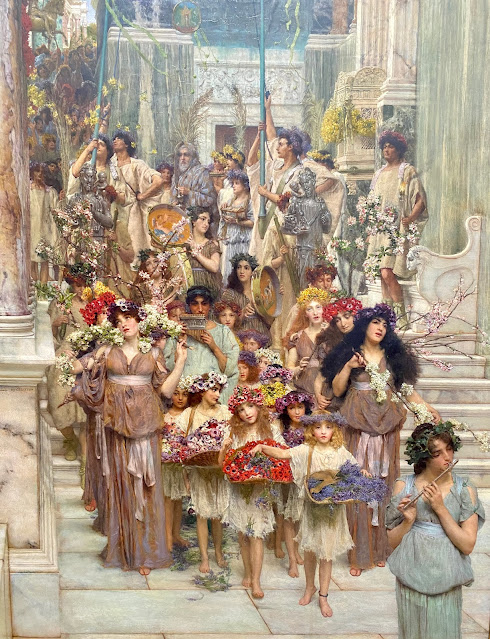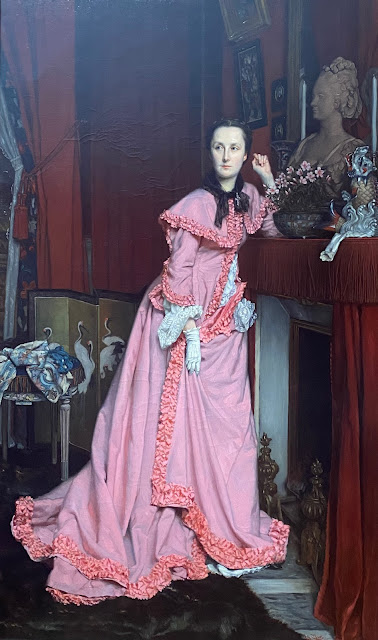I hadn't realized just what a jerk J. Paul Getty had been the last time I visited the museum built with his oil fortune. According to the New Yorker, his heirs are following in his tax-dodging footsteps even as they pretend to be progressives.
 |
| Bust of J. Paul Getty by Pier Gabriele Vangelli (1939) |
Still, you can't argue with the transcendent beauty of the museum established in his name. It takes work of monumental size--all acquired after his death in 1976--to fill some of the interior spaces.
That specimen is a lot bigger than Thom, barely visible at the center of this photo!
Works from Getty's private collection, typically acquired at auction when prices were depressed, fill spacious galleries. Despite his notorious stinginess, he still amassed nearly 600 items worth more than $4 million when he died.
Look no farther than the subject of this bust--who physically reminds me of
my friend Tim--to see how reputations change over time. During the 1880s, many people considered
Gérôme (who?) the world's most famous living artist because his work was reproduced so often. Time has been kinder to his sculptor, whose bust of an African-American woman anchored
a Metropolitan Museum of Art show about the depiction of enslaved people in art.
While residing in a rented Manhattan penthouse in the late 1930s, he took a fancy to his landlord's 18th century French antiques. Over time, he established a collection worthy of
Louis XIV.
You know, the Sun King, the guy who build
Versailles.
While I was composing this shot of a "fire dog," a Getty guard showed me how to adjust the brilliance of the photo before taking it.

















No comments:
Post a Comment